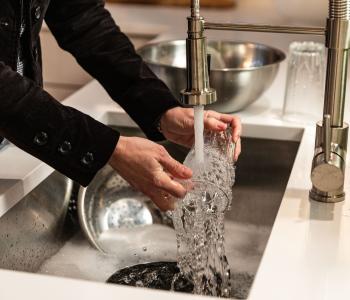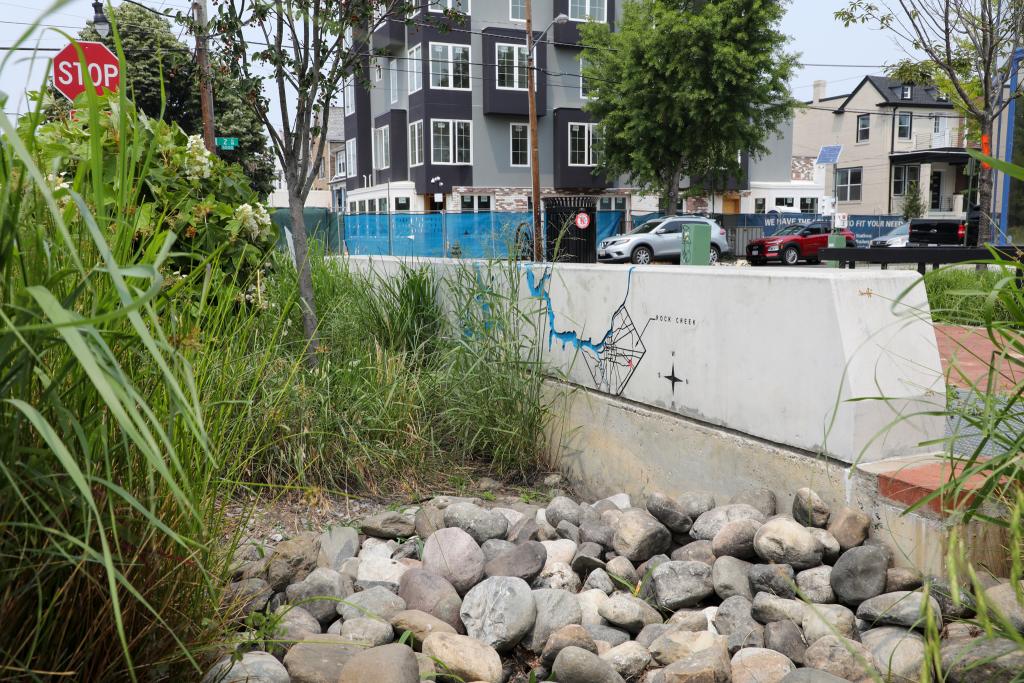Protect your pipes and keep hydrants visible
As temperatures drop and winter weather arrives, DC Water reminds residents and business owners to protect their pipes. There are steps you can take to reduce the risk of pipes in your home freezing or breaking. Pipes that freeze most frequently are those that are exposed to the outside, such as outdoor hose outlets, water sprinkler lines and water pipes along an outside wall or in unheated interior areas such as cabinets, closets, attics, garages, basements and crawl spaces. For emergency service inside your home, customers should contact a licensed plumber.
To Prevent Frozen Pipes:
- Eliminate sources of cold air near pipes by sealing drafty windows and doors, and insulating walls and attics.
- If pipes are exposed to cold air, wrap them with insulation or even newspaper will help.
- Keep water moving through pipes by turning on the faucet to a very small, steady trickle. Use the faucet farthest from the main valve. This is often the highest point in your home.
- Run warm water through your pipes if you begin to see a decrease in water pressure to loosen any ice that may be forming within your pipes.
- Keep pipes in cabinets and vanities warmer by opening the doors to those cabinets to let warm air in.
If Your Pipes Freeze:
If you find you have a frozen pipe, you should immediately take steps to thaw the pipe to keep it from bursting.
- First, locate and shut off the main water supply valve in case a pipe has broken.
- Next, open the faucet so that water will flow through the pipe once the area is melted. This will help melt more ice.
- Then, gently apply heat with a hairdryer around the pipe. Keep all sources of heat away from flammable materials and do not use any open flame devices. Also, do not use devices that will cause the melted ice to boil, as that can also cause pipes to break.
- Call a licensed plumber if you cannot locate the frozen section, if you are unable to reach it, or if you are unable to thaw it.
- Check for other frozen pipes in your home or business, especially those pipes that are located along an exterior wall or bring the water into the building at the foundation.
- Once you have thawed the frozen area, check the pipes for leaks to make sure the ice did not cause any cracks or damage to your pipes.
For Pipes Outside Your Home:
- The service line that runs from the meter outside your home to your indoor plumbing is considered private property and is the owners responsibility. If you believe you have a problem on the private-side service line, please contact a licensed and registered plumber.
- The water mains that carry water to service lines are highly pressurized and the water inside is fast moving, and therefore extremely unlikely to ever freeze.
Also, while shoveling snow outside, please be sure to not cover fire hydrants or storm drains. DC Water encourages residents and business owners to shovel out the hydrants and storm drains in a deep snow.
Call the DC Water 24-hour emergency line at (202) 612-3400 for water emergencies on public property, including suspected water main breaks.





